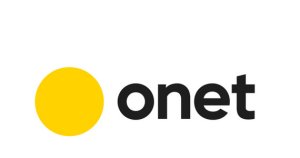Exploring ONET: A Vital Tool for Job Analysis and Workforce Development

Introduction
As the job market continues to evolve, understanding the skills and requirements of various occupations becomes increasingly important. The Occupational Information Network (ONET) is a vital resource designed to help individuals, employers, and policymakers navigate the complexities of the modern workforce. By providing detailed descriptions of job roles, skills, and knowledge requirements, ONET enables better career planning, educational initiatives, and policy-making.
What is ONET?
ONET is a comprehensive database developed by the U.S. Department of Labor that offers detailed information about various occupations in the workforce. While primarily utilized in the United States, its implications extend globally as nations look to understand workforce needs. The ONET system comprises a variety of elements including job descriptions, necessary skills, training requirements, and the outlook for each occupation.
Importance of ONET in Workforce Development
The relevance of ONET extends beyond mere job listings. It plays a crucial role in workforce development by:
- Guiding Career Choices: Individuals seeking employment can use ONET to explore potential careers, assess job requirements, and evaluate which roles best fit their skills and aspirations.
- Assisting Employers: Businesses can leverage ONET to identify candidate qualifications, align training programs with industry needs, and develop strategies to enhance workforce capabilities.
- Informing Policymakers: Government agencies and educational institutions can use ONET data to shape policies that encourage workforce development, improve educational programs, and respond to labour market trends.
Current Trends and Utilisation
The use of ONET is evolving in response to the rapid changes in the job market. With the rise of technology and shifts in common work practices (such as remote work), ONET data is regularly updated to reflect these changes. As of 2023, ONET has incorporated information on emerging roles within the tech industry, such as data analysts and cybersecurity specialists. Moreover, as various sectors adapt to the post-pandemic landscape, ONET provides necessary insights into the growing fields influenced by these changes.
Conclusion
In conclusion, ONET serves as a pivotal tool in understanding and shaping the modern workforce. With its rich database of occupational information, ONET aids individuals in making informed career choices while also providing valuable insight for employers and policymakers alike. As job markets continue to evolve, tools like ONET will be instrumental in guiding educational initiatives and workforce strategies to meet future demands. For readers who are navigating their career paths or considering workforce development initiatives, engaging with ONET’s resources could prove immensely beneficial.
You may also like

Alina Habba: An Insight into Her Legal Career

The Life and Career of Uma Thurman: A Hollywood Icon
